Have you upgraded your NBN plan to a faster speed? You might also need a new router
To get the best speeds on the new faster plans, your router may need an upgrade too
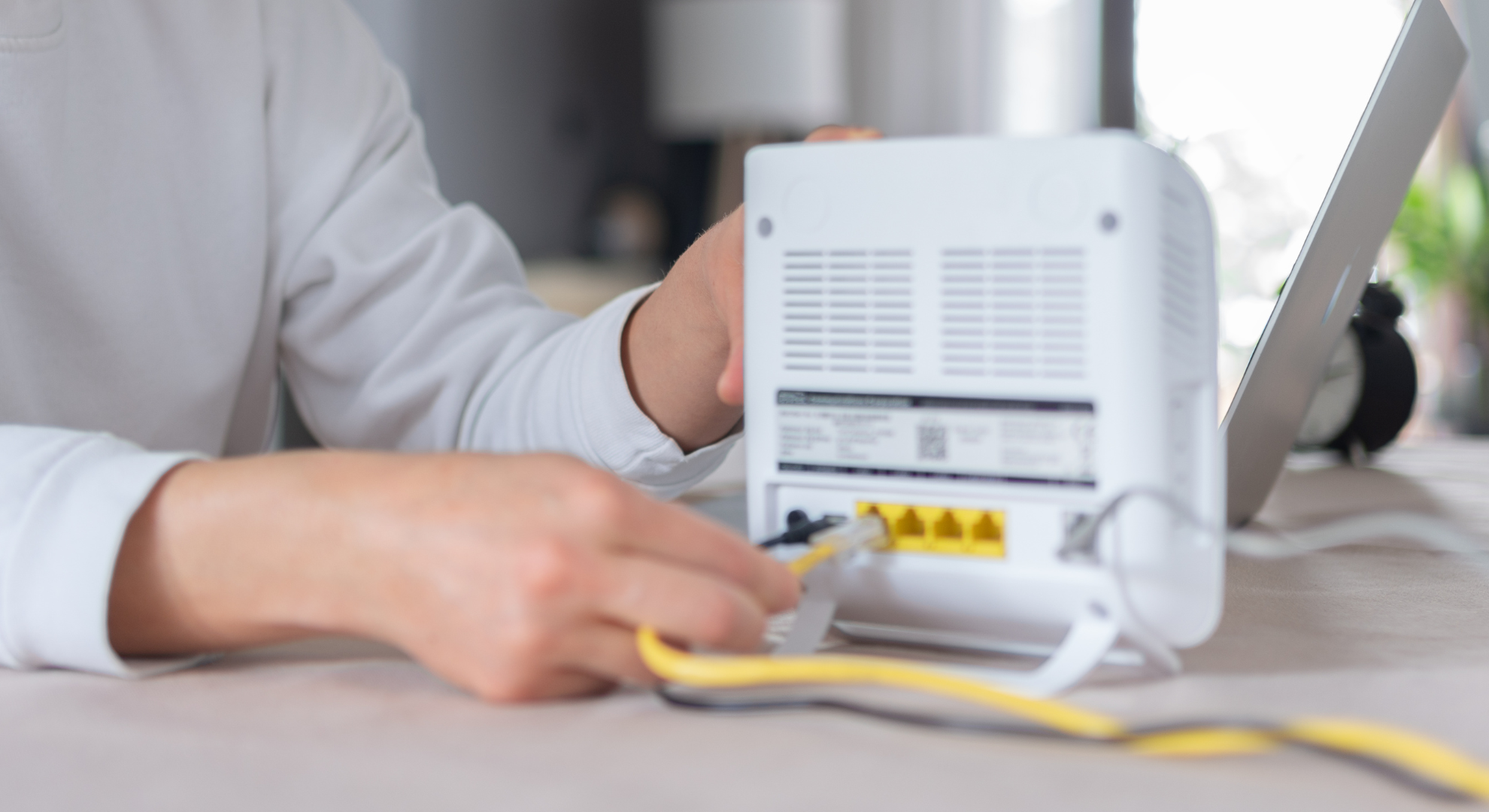
As of September 2025, big speed boosts have come to the NBN. It's represented one of the biggest changes to the network since its inception and millions of Australians can benefit. Yet, while changes to your plan in the past might have been as simple as upgrading your speed tier or switching between the best NBN providers, things are different this time around – and many households may need to buy a new Wi-Fi router to get the full speed available.
As mentioned, in September 2025, Australia’s NBN network received its most substantial speed upgrade since it was first switched on in 2010. For FTTP (fibre to the premises) and HFC (hybrid-fibre coaxial) customers, NBN 100 plans have had their maximum download speed boosted from 100Mbps to 500Mbps, while NBN 250 have increased from 250Mbps to 750Mbps. A new top tier has also being introduced, NBN 2000, which as the name suggests has a theoretical top speed of 2,000Mbps.
NBN 1000, NBN 25 and the most popular speed tier in Australia, NBN 50, didn't receive new maximum speeds, though NBN 1000 has gotten a new minimum speed of 750Mbps. If your household is still using FTTN (fibre to the node) or FTTC (fibre to the curb) technology, you'll need to see if you qualify for the government's free NBN fibre upgrade program to enjoy the new speeds.
If you’re tempted by the exceptional speeds that are available on the 500Mbps, 750Mbps and 2,000Mbps speeds, note that you may need to also purchase a newer and faster router to actually get the full speed on devices like laptops, desktop PCs, phones and gaming consoles.
If your Wi-Fi router is particularly old (let’s say five or more years) or you notice dramatic speed drops around the home when using Wi-Fi, then an upgrade may also help resolve these problems. To make choosing the right router easier, we’ve highlighted five models below that can help ensure you get the best speed possible from your NBN connection and also avoid any frustrating dead spots around your home. We also note the kinds of Wi-Fi routers that are needed to achieve full speed on an ultrafast 1,000Mbps or new 2,000Mbps NBN plan.
What happens if you have an older Wi-Fi router but don’t upgrade? Your internet will still work, but you may notice you aren’t getting anywhere close to the full speed possible when the new NBN plans start to arrive in September.
Want to know more about how to find the best router? We dig deep in our FAQ further down.
What minimum Wi-Fi type will you need for each speed tier?
Deciding on the minimum Wi-Fi type you need can be tricky, as everyone's home internet requirements are different. However, if we’re looking at the minimum required tech for an NBN 500 or faster plan, we’d recommend a router with at least Wi-Fi 6 connectivity, and one that offers enough extra overall bandwidth so you can achieve your plan’s top speed consistently, even if you're not physically right next to the router itself.
If you’re shopping for a new router, the maximum Wi-Fi bandwidth a model offers is reflected in the numbers immediately following AX, AXE or BE when looking at the specs of your device. For example, AX1800 is good for up to 1,800Mbps, but note that’s maximum combined throughput, factoring in having multiple wireless devices connected and accessing the internet.
In the real world, when you’re sitting on the couch with one of the best laptops, an AX1800 router will give you a top wireless speed of 750Mbps to any individual device. While that’s fine for a NBN 500 plan, it falls short of what’s needed to get the full speed from NBN 1000 or NBN 2000. Moreover, the further away you are from your router, the lower the maximum wireless speed will be, so to achieve top speeds throughout your house, we advise choosing a router that doesn’t just meet the minimum your NBN plan might need, but provides significantly more so you have some headroom.
For NBN 750 and NBN 1000, you could get by on a Wi-Fi 6 router, but ideally we’d recommend a Wi-Fi 6E or 7 model, and in all those cases, you should aim for a combined top speed rating of at least 3,000Mbps (AX3000 or BE3000) of bandwidth.
For NBN 2000, keep in mind that the NBN Co. will also need to upgrade the NTD (network termination device) at your location, and you will need a router with a 2.5Gbps wired Ethernet port. While the best Wi-Fi 6E routers will work with NBN 2000, you should be looking at Wi-Fi 7 models with 11,000Mbps (or better) throughput, and for power users, 19,000Mbps (BE19000).
Here's a quick recap of the above recommendations:
- NBN 500: Wi-Fi 6 or higher (1,800Mbps or faster)
- NBN 750: Wi-Fi 6E or higher (3,000Mbps or faster)
- NBN 1000: Wi-Fi 6E or 7 (3,000Mbps or faster)
- NBN 2000: Wi-Fi 7 (11,000Mbps or faster)
The best easy NBN router solution
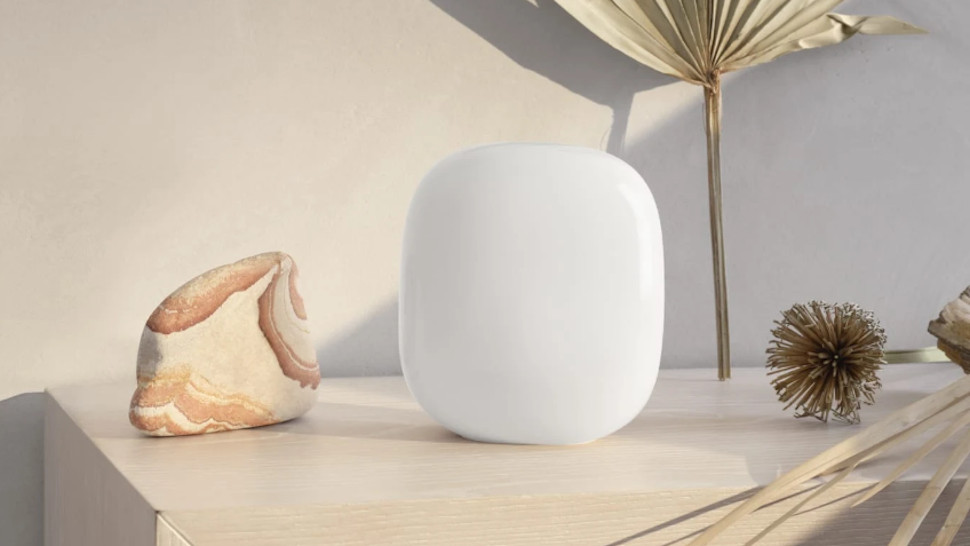
Google Nest Wi-Fi Pro
A simple router for any household
Wireless connectivity: Wi-Fi 6E, 2.4GHz/5GHz/6GHz simultaneous tri-band | Wired connectivity: 2x Gigabit Ethernet ports | Features: Mesh, Matter support, parental controls | Throughput: up to 5,400Mbps | Suitable for: up to NBN 1000
Google’s Nest Wi-Fi Pro is the best all-rounder solution if you’re after a simple internet upgrade to support the new faster NBN tiers. Capable of maximum throughput of up to 5,400Mbps and offering Wi-Fi 6E with mesh support, this router will have no trouble accessing the fast speeds offered by NBN 1000.
A three-pack isn’t much more expensive than a single Nest Wi-Fi Pro module, so we recommend picking that kit, even if your home has a small footprint. With only Gigabit Ethernet on wired ports, it won’t cut it for NBN 2000, but this is a suitable choice for anything up to NBN 1000.
The best budget NBN router
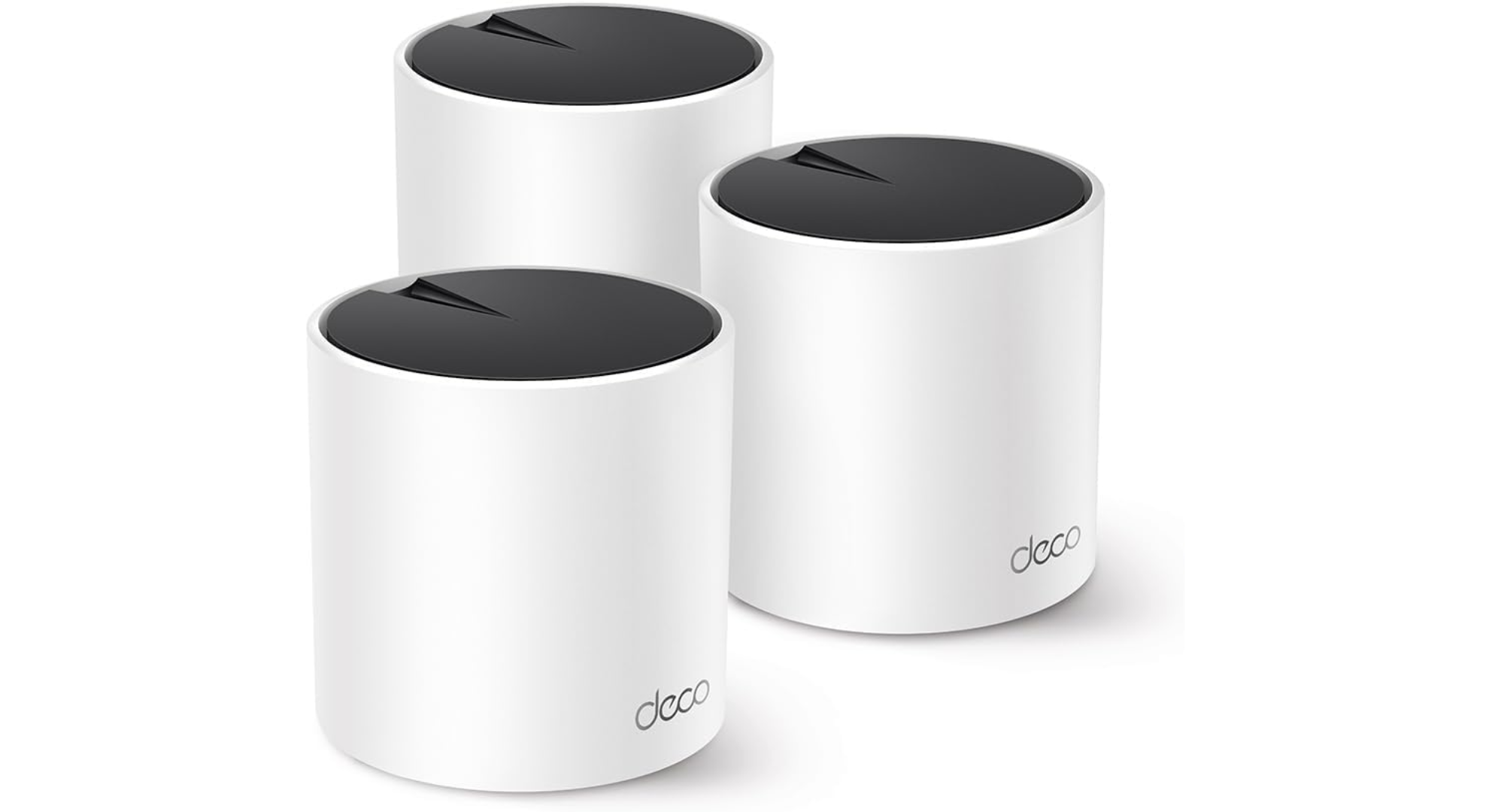
TP-Link Deco X55 AX3000
A low-cost way of getting NBN 1000-ready
Wireless connectivity: Wi-Fi 6, 2.4GHz/5GHz | Wired connectivity: 3x Gigabit Ethernet ports | Features: IoT device support, parental controls | Throughput: up to 3,000Mbps | Suitable for: up to NBN 1000
The TP-Link Deco X55 AX3000 is the router to go with if cost is your main concern. This device comes as either a three-piece mesh kit or as a single device, meaning you can easily add more units in the future to cover a larger area.
Combine that flexibility with an AX3000 speed rating and Wi-Fi 6 connectivity, and you’ve got a great all-rounder that’ll deliver fast speeds well. Just be aware that some additional features are locked behind a subscription (such as advanced parental controls and additional antivirus security), which can cost between AU$4.99 per month (or AU$59.99 annually) and AU$7.99 per month (AU$29.99 annually).
The best NBN router for an apartment or small home
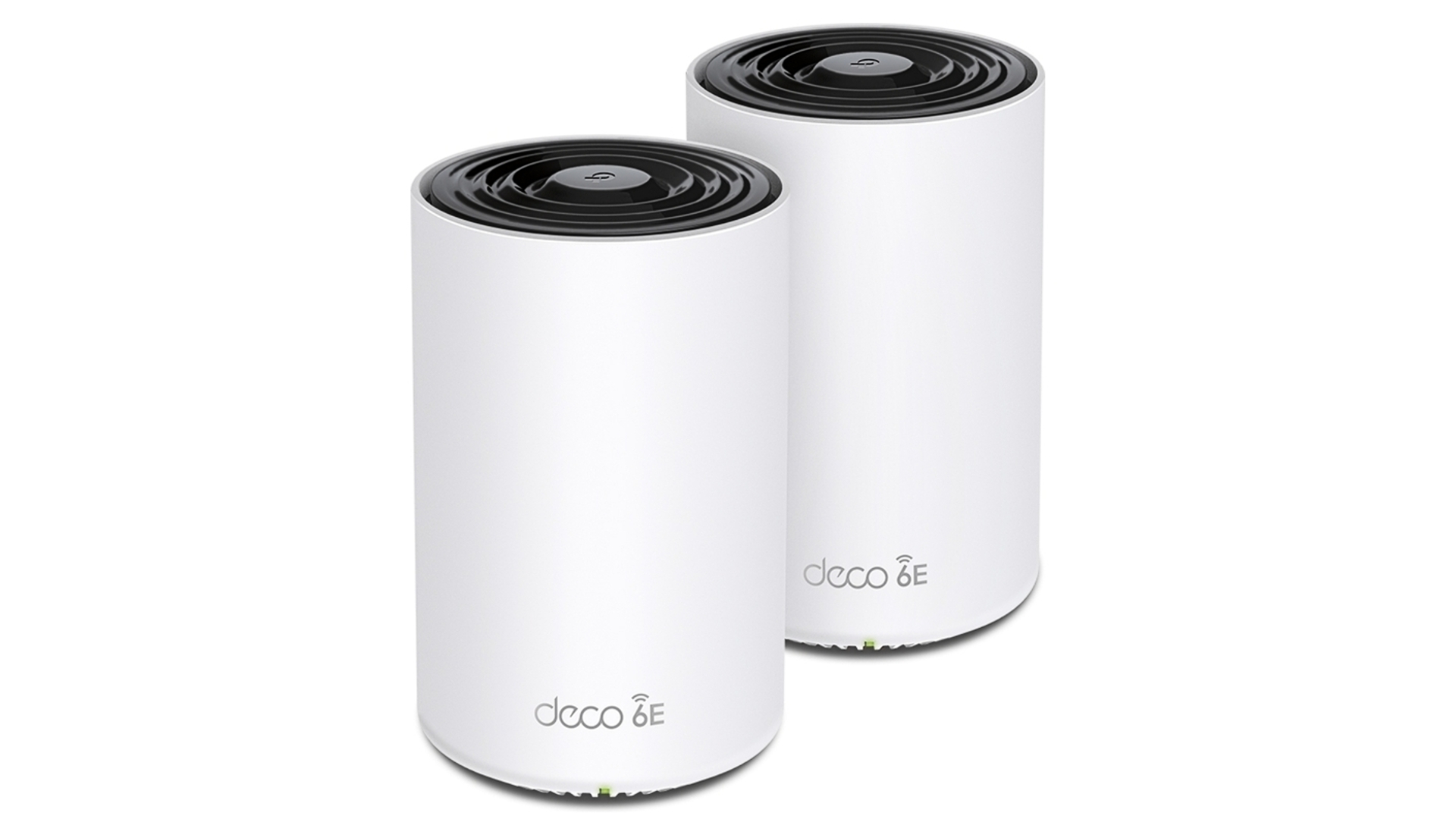
TP-Link Deco XE75
The best option for an apartment or small home
Wireless connectivity: Wi-Fi 6E, 2.4GHz/5GHz/6GHz simultaneous tri-band | Wired connectivity: 3x Gigabit Ethernet ports | Features: IoT device support, parental controls | Throughput: up to 5,400Mbps | Suitable for: up to NBN 1000
If you’re living in an apartment without much space, you may not need a mesh network, and your wireless signals may be overlapping with dozens of others in the building, which can lead to the main Wi-Fi bands being quite congested – and slow speeds down for everyone. This makes a router like the TP-Link Deco XE75 a worthwhile option, as its Wi-Fi 6E tri-band connectivity allows it to better avoid congestion by using the newly unlocked 6GHz band, plus it has a range of improved technologies that better handle crowded airwaves.
If you want, you can add on an additional XE75 unit to create a mesh network, or purchase the router in a pack of two or three mesh devices. Keep in mind that some security and parental controls settings are locked behind a subscription, costing between AU$4.99 per month (or AU$29.99 annually) and AU$7.99 per month (AU$59.99 annually) depending on your selected features. This router only features a single gigabit Ethernet port, so it isn’t suitable for NBN 2000.
The best NBN router for a big home
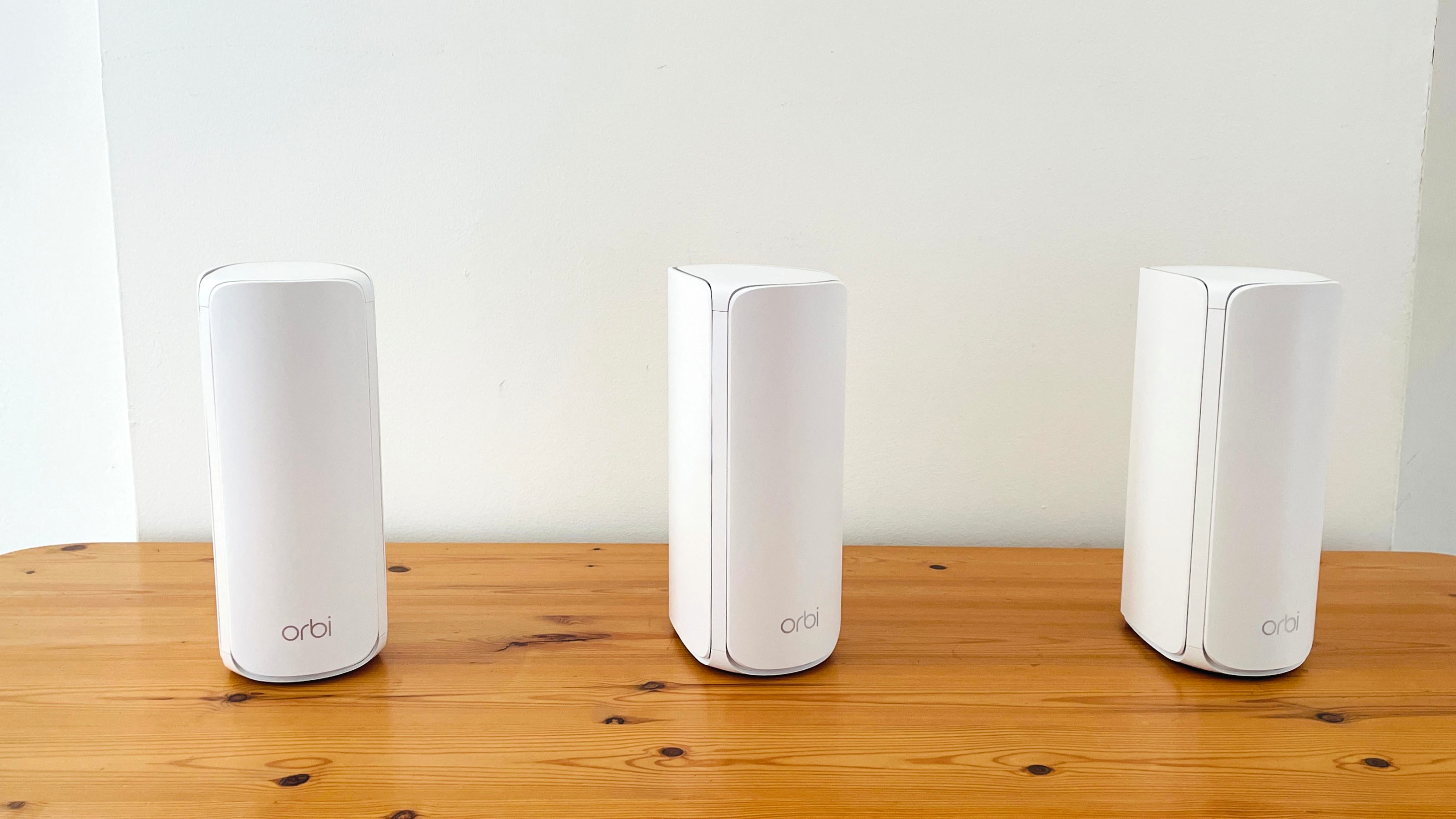
Netgear Orbi 770
The best option for a big home
Wireless connectivity: Wi-Fi 7, 2.4GHz/5GHz/6GHz simultaneous tri-band | Wired connectivity: 1x 2.5Gb Ethernet (WAN), 3x 2.5Gb Ethernet (LAN) on router / 2x 2.5Gb Ethernet (LAN) on satellites | Features: App support, Guest and IoT networks, multi-link operation | Throughput: up to 11,000Mbps | Suitable for: up to NBN 2000
Netgear’s Orbi range is brilliant for a big home, with the 770 being competitively affordable when compared to other Wi-Fi 7 mesh networks. Read our 4.5-star Netgear Orbi 770 review for the full story, but the short version is that it offers Wi-Fi 7 and a total throughput of up to 10,800Mbps. The Orbi 770’s mesh nodes can also use tri-band Wi-Fi or 2.5GbE wired connections to communicate with each other, to help ensure you get the best possible speeds across your entire home.
The 11,000Mbps bandwidth might seem overkill, but that’s ideal for getting the most out of an NBN 500, 750 or 1,000 connection. If going for NBN 2000, we’d recommend running Ethernet cables between your mesh nodes to ensure the fastest throughput possible. For power users on NBN 2000 plans, it’s also worth considering the even faster Orbi 870.
The best router for performance
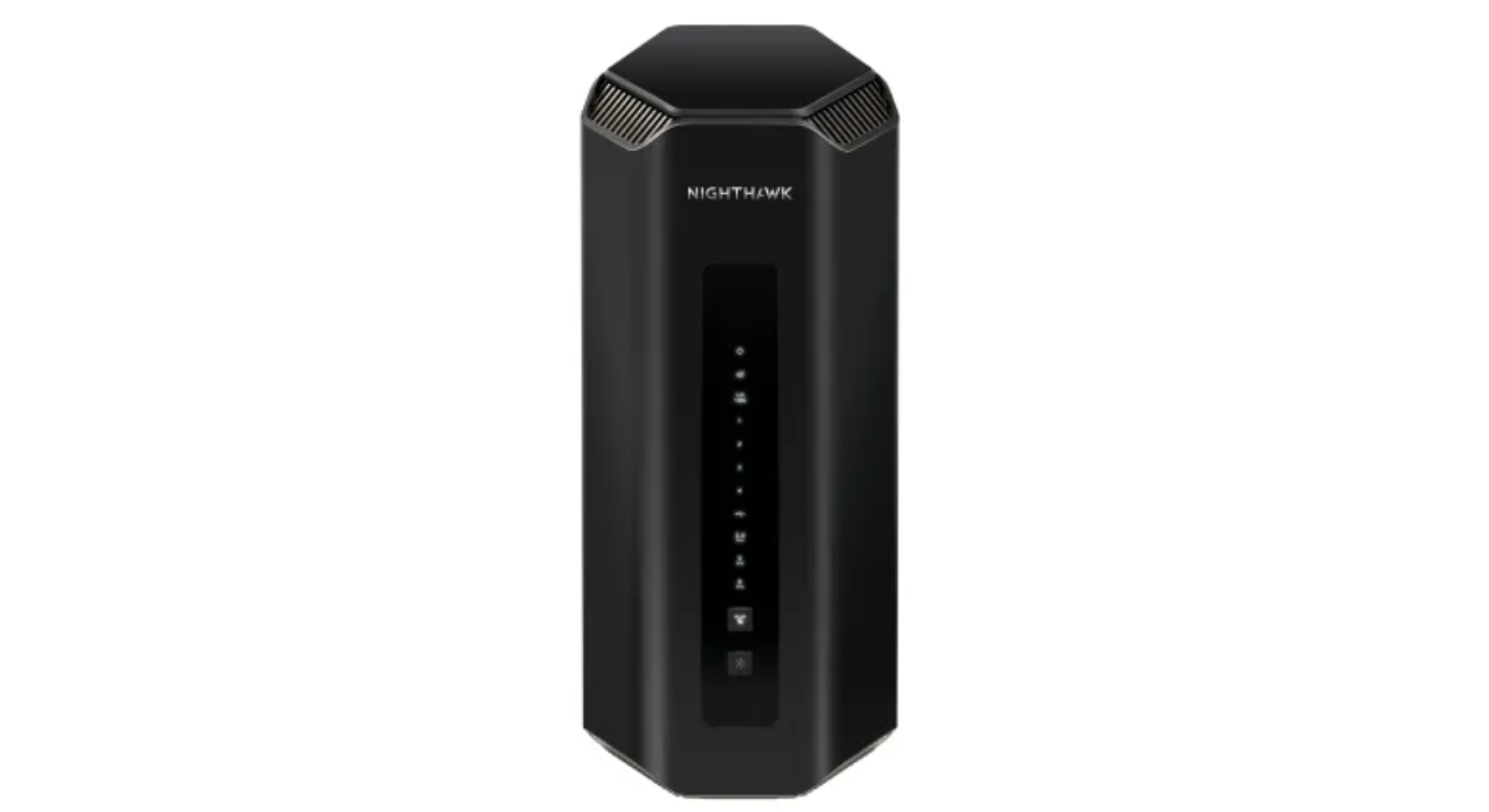
Netgear Nighthawk RS700S
The best option for homes with a need for speed
Wireless connectivity: Wi-Fi 7, 2.4GHz/5GHz/6GHz | Wired connectivity: 1x 10Gb Ethernet, 4x Gigabit Ethernet ports | Features: IoT network tools, Smart Connect, multi-link operation | Throughput: up to 19,000Mbps | Suitable for: up to NBN 2000
This was Netgear’s first Wi-Fi 7 router and it’s definitely worth considering if you want the fastest speeds possible. Offering an ultrafast 10Gb Ethernet connection and total Wi-Fi throughput of up to 19,000Mbps, this is a router for serious gamers and families where everyone wants to stream their own show in 4K at the same time. Unlike other routers on this list, the RS700S allows you to split its bands into separate SSIDs, giving you more freedom to decide exactly how devices are connected on your home network.
At the moment, the RS700S isn’t a mesh router, though it’s expected to get updated with EasyMesh support at some point in the future. Alternatively, if you’re after high speeds with a mesh network, you may be more interested in the Netgear Orbi 970, which offers a combined 27,000 Mbps of bandwidth.
How to pick a router for the fastest NBN speeds
Forgive us for getting technical, but there are a couple of things to consider.
Throughput
Throughput considers the maximum data transfer rate across all bands and ports, not the speed that you should expect from any single device. For a Wi-Fi 6 router, this is represented by AX and the numbers following it, with the latter providing a rough total of the available bandwidth in Mbps.
A Wi-Fi 6E router will generally use the AX or AXE prefixes in its model name, and a Wi-Fi 7 router will use BE. It's recommended to go with a router with much more throughput than your NBN speed – for example, we suggest 1,800Mbps for NBN 500, all the way up to 11,000Mbps or better for NBN 2000.
Wi-Fi standard
This is likely the naming convention you’re most familiar with. The Wi-Fi standard uses figures like ‘Wi-Fi 6’, ‘Wi-Fi 6E’, ‘Wi-Fi 7’ and so on to denote the generation of Wi-Fi technology a device supports. We’re not recommending Wi-Fi 5 routers in this article because they don’t tend to have the bandwidth needed for high speed NBN (500Mbps or faster), but an extremely basic rule of thumb is that the newer the tech and higher the Wi-Fi ‘number’, the better your router’s throughput will be.
Wi-Fi 6 operates across both the 2.4GHz and 5GHz radio spectrums (or bands), with the router capable of using both. Wi-Fi 6E operates similarly, but adds the 6GHz band into the mix, which can help avoid interference. Wi-Fi 7 typically offers all three bands (though there are some dual-band Wi-Fi 7 routers on the market), but adds additional technology to improve speed and reliability – especially for connecting multiple devices and roaming on a mesh network.
These three radio bands each offer different performance considerations:
- 2.4GHz, for example, tends to have the best range indoors, but real-world bandwidth tends to cap out at only a few hundred megabits per second, and as 2.4GHz has been around the longest, it tends to suffer the most interference
- 5GHz offers much better bandwidth of up to 1,000Mbps at the cost of shorter range, and is common enough now that interference can be an issue.
- 6GHz offers the same bandwidth as 5GHz, but on a frequency that is not yet commonly used, and is ideal for reaching or exceeding 2,000Mbps Wi-Fi speeds.
Using all three bands at the same time will improve the chances that individual devices get the best speeds possible.
Now, let’s bring these factors together. Combining the AX or BE indicated throughput with the latest Wi-Fi standards, you should be able to access the fastest possible speeds throughout the home – provided the router isn’t too far away from your client device (and if it is, you may be interested in one of the best mesh Wi-Fi systems).
Everything comes down to throughput – a Wi-Fi 7 router with a lower AX or BE rating should still be capable of offering max speeds on an NBN 750 connection, but what really matters is the maximum Mbps throughput your router can provide when transmitting a Wi-Fi signal.
Just keep some things in mind about Wi-Fi standards:
- Wi-Fi 6 utilises the 2.4GHz and 5GHz bands, with the 2.4GHz band prone to interference in crowded living environments, and Wi-Fi 6 is less capable of intelligently routing local traffic to be as fast as possible, at least when compared to Wi-Fi 6E and 7
- Wi-Fi 6E uses 2.4GHz, 5GHz and 6GHz, incorporating newer tech to clamp down on interference, so there’s less of a congestion issue – at least until 6GHz-capable routers become more common
- Wi-Fi 7 gives better future-proofing, and can better handle multiple devices and roaming
- A mesh Wi-Fi system can greatly improve Wi-Fi coverage throughout the home, regardless of the Wi-Fi standard being used
- If you live in an apartment, check if your router has a feature called BSS colouring, as it helps address interference, and makes it easier for your router to ignore any signals from other networks. MU-MIMO is another great feature, and allows your router to better speak to several client devices at once, instead of one-by-one.
What about the rest of my tech?
Wi-Fi’s strong backwards compatibility means that older client devices like phones, laptops and other internet-connected tech may work with your new router, but for the best speeds those client devices will also need to match your router’s fastest Wi-Fi standard.
Each client device will support a specific maximum throughput, Wi-Fi standard and select bands – although typically, only the bands and Wi-Fi standard are openly advertised, and discovering the maximum speed a device supports will often mean doing a little digging.
For example, the PlayStation 5 launched with Wi-Fi 6 and a much slower throughput (around 1,000Mbps) than the later-released PlayStation 5 Pro, which offers Wi-Fi 7 and real-world throughput of up to around 3,000Mbps.
The same goes for the Samsung Galaxy S25 Ultra, which offers Wi-Fi 7 and throughput speeds of up to around 3,000Mbps. However, note that not all Wi-Fi 7 devices can connect at the same speed – for example, the latest iPhone 16 uses Wi-Fi 7, but only reaches top speeds of about 1,500Mbps in real-world tests, so it won’t be able to fully utilise the maximum possible speed offered by an NBN 2000 plan. As a comparison, that still dwarfs the real-world throughput of the iPhone 14 with Wi-Fi 6, which peaks around 1,000Mbps.
What about laptops? The latest M3 and M4 MacBook Pro laptops support Wi-Fi 6E and as such are capable of transferring data at up to 2,000Mbps, while older M2 Macs offer Wi-Fi 6 and will max out at around 1,000Mbps. There aren’t a lot of laptops that support the full bandwidth made available with Wi-Fi 7, so to get the fastest speeds on an NBN 2000 connection, you’d likely need to use a wired Ethernet connection.
What is a Wi-Fi router?
A Wi-Fi router is the box that takes your internet connection and redistributes it to all your client devices, from phone and laptops to doorbell cameras. For locations with an NBN connection, routers connect to another box with an NBN logo on it (known as a Network Termination Device), which connects to your NBN provider.
Your router may have been provided directly by your NBN provider as an inclusion with your plan, or you may have purchased one from a tech retailer like Amazon or JB Hi-Fi. If it was purchased in the last couple of years, you might not need to upgrade it to support the incoming NBN speed boosts, but there are some indicators that can help determine if you should purchase a new unit or not.
Should I upgrade my router for faster NBN speeds?
Simply put, the newer the technology, the better the speed, and the more consistent experience when using Wi-Fi. The most consistent wireless experience often comes from using a mesh system, where nodes are placed around your home evenly and your devices connect to the optimal one. This is very helpful if your home is big or has thick walls, allowing you to expand the footprint of your network and avoid any dead spots.
Additionally, most older routers use Gigabit Ethernet ports (1,000Mbps) for wired connections, and we’d recommend checking this – you will find more information in your router’s manual or by looking it up online, or the max speed may be physically indicated on the device’s ports. To handle the bandwidth of a 2,000Mbps connection from an NBN 2000 plan, your router will need 2.5GbE (2,500Mbps) support on its WAN (wide area network) port.
Generally speaking, if your router is Wi-Fi 5 or older, we think it is well worth purchasing a newer device if you’d like to make the most of these new, faster plans. If your router is Wi-Fi 6, we’d still recommend upgrading if you’re considering NBN 1000, and if you’re thinking of signing up to NBN 2000, we’d recommend a Wi-Fi 7-capable model.
You may not see the benefit of upgrading if your household doesn’t use the internet very intensively, but if you’re finding things are slowing down (particularly when lots of people are using it) or care about getting the best possible speeds, the upgrade could be well worth it.
Sign up for breaking news, reviews, opinion, top tech deals, and more.

Zac was part of TechRadar's Australian phones desk, covering the big releases from the likes of Google, Samsung and Apple. He continues to write about the Aussie EV market for this publication. He's previously written for Gizmodo Australia, Canstar Blue and The Daily Mail Australia (with articles on Nine, Junkee, Kotaku Australia and Lifehacker Australia).
- Lindsay HandmerSenior Writer – TechRadar Australia
You must confirm your public display name before commenting
Please logout and then login again, you will then be prompted to enter your display name.